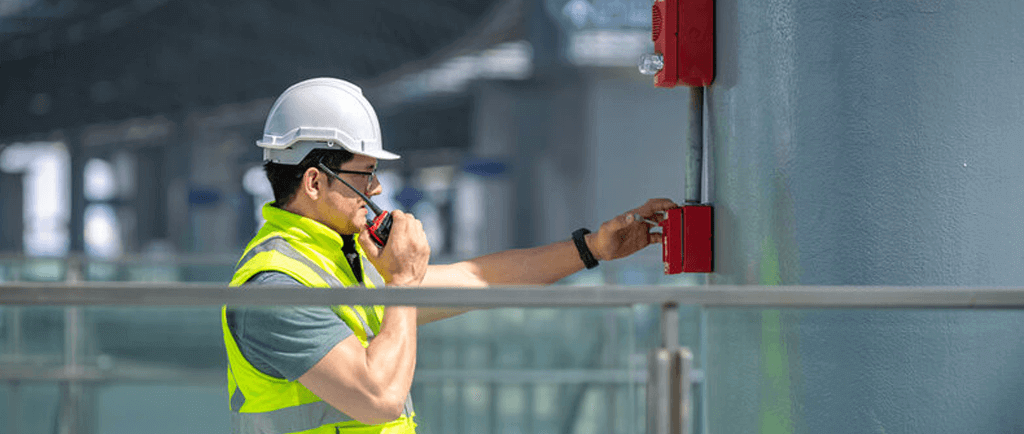
15 Essential Strategies to Improve Workplace Safety
Workplace safety isn’t just a legal requirement; it’s the backbone of a thriving organization. Imagine walking into a workspace where every employee feels safe, valued, and heard. It’s not just about preventing accidents; it’s about fostering an environment where everyone can focus on doing their best work without worry.
In this blog post, we’ll explore 15 essential strategies to enhance safety in your workplace, ensuring a healthier and more productive environment for all:
- Establish a Clear Reporting System: Simplify the process for reporting safety issues.
- Promote a Safety Culture: Cultivate a workplace where safety is everyone’s business.
- Regular Safety Training: Keep everyone up-to-date with the latest safety practices.
- Implement Safety Protocols: Tailor safety rules to fit the unique needs of your workspace.
- Conduct Hazard Assessments: Identify potential dangers before they cause harm.
- Utilize Safety Signage: Use signs to remind and warn about hazards.
- Wear Proper Safety Equipment: Ensure the right protective gear is always used.
- Keep the Workplace Clean and Organized: A tidy space reduces risks.
- Offer First Aid Training: Equip staff with the skills to handle emergencies.
- Perform Regular Equipment Maintenance: Prevent accidents through routine checks.
- Establish Emergency Exits and Plans: Make sure everyone knows how to exit safely during emergencies.
- Create a Safety Committee: Have a dedicated team to oversee safety initiatives.
- Encourage Physical and Mental Health: Support overall well-being of employees.
- Adopt Technology Solutions: Leverage tools like Safetymint to streamline safety processes.
- Learn from Past Incidents: Use previous mishaps as learning opportunities to prevent future ones.
Establish a Clear Reporting System:
Setting up an intuitive, easily accessible system for reporting safety concerns is fundamental. When employees know exactly how to report incidents, observations, and near-misses, the organization benefits from real-time insights into potential risks. This transparency is vital for swift action and underscores the importance of everyone’s role in maintaining a safe environment.
Promote a Safety Culture:
Building a culture where safety is ingrained in every aspect of the organization can transform the workplace. It’s about going beyond compliance to creating an atmosphere where safety is a shared value, encouraging open discussions, and making sure safety decisions are made in the interest of protecting everyone. This collective commitment ensures that safety becomes a way of life at work.
Regular Safety Training:
Continuous education on safety practices and emergency responses is key. These sessions not only reinforce the importance of safety but also keep the team updated on new protocols and equipment. By making safety training a regular part of your operational calendar, you create a knowledgeable workforce that can confidently handle safety challenges.
Related read: Our listing of the best Health and Safety Software.
Implement Safety Protocols:
Tailoring safety rules and procedures to the specific needs and risks of different departments ensures that safety measures are relevant and effective. This customization allows employees to fully understand their role in preventing accidents and ensures that safety protocols are practical and applicable to daily operations.
Conduct Hazard Assessments:
Systematic evaluations of the workplace to identify potential hazards are crucial for preventing accidents before they occur. These assessments should be conducted regularly and involve employees from all levels, as they often have firsthand knowledge of the risks in their areas. By proactively addressing these hazards, you significantly reduce the likelihood of workplace injuries.
Utilize Safety Signage:
Effective signage serves as a constant reminder of the safety practices and hazards within the workplace. It’s essential that these signs are clear, visible, and placed in strategic locations to remind employees and visitors of the importance of safety and the need to remain vigilant at all times.
Wear Proper Safety Equipment:
Ensuring that all employees have access to and use the necessary personal protective equipment (PPE) is non-negotiable. Proper use of PPE significantly lowers the risk of injury and demonstrates the organization’s commitment to employee safety. Regular checks and training on the correct use of PPE are essential components of a robust safety program.
Keep the Workplace Clean and Organized:
A well-organized workplace is inherently safer. Regular cleaning and decluttering prevent slips, trips, and falls, and contribute to a more pleasant and productive working environment. Encouraging employees to take responsibility for their work areas fosters pride and ownership, further enhancing the safety culture.
Offer First Aid Training:
Providing first aid training equips employees with the skills to respond effectively to injuries, potentially saving lives. This training should cover the basics of first aid, including how to respond to common workplace injuries and emergencies, further embedding safety into the fabric of your organization.
Perform Regular Equipment Maintenance:
Preventative maintenance is key to ensuring that all machinery and equipment are safe to use. Regular inspections and servicing can identify and rectify potential issues before they lead to accidents, highlighting the organization’s proactive stance on safety.
Establish Emergency Exits and Plans:
Well-marked emergency exits and clearly defined evacuation plans are essential for ensuring that all employees can quickly and safely leave the premises in the event of an emergency. Regular drills and clear communication ensure that these plans are well understood and can be executed smoothly when necessary.
Create a Safety Committee:
A safety committee brings together employees from different levels and departments to focus on improving workplace safety. This committee serves as a forum for discussing safety concerns, suggesting improvements, and monitoring the implementation of safety initiatives, ensuring that safety remains a priority across the organization.
Encourage Physical and Mental Health:
Supporting the overall well-being of employees through wellness programs and initiatives has a direct impact on workplace safety. Healthy employees are more engaged, less likely to be involved in accidents, and more resilient, which contributes to a positive and safe working environment.
Adopt Technology Solutions:
Integrating technology into your safety program can significantly enhance efficiency and effectiveness. Safety management software, like Safetymint, enables seamless reporting, real-time monitoring, and detailed analytics, providing a comprehensive overview of the organization’s safety performance and areas for improvement.
Learn from Past Incidents:
A thorough analysis of past incidents and near-misses is invaluable for preventing future accidents. By understanding what went wrong, organizations can implement targeted changes to prevent similar incidents, ensuring continuous improvement in their safety practices.
Enhancing workplace safety is a continuous journey, requiring commitment, education, and the right tools. By embracing these 15 strategies, organizations can create a safer, more productive environment that benefits everyone involved.
Ready to take your workplace safety to the next level?
Discover how Safetymint’s Incident Management System can streamline your safety processes, making it easier than ever to report, track, and analyze safety incidents.
Sign up for a 14-day free trial today
Ben Johnson is a dedicated Customer Success Executive at Safetymint. With a strong commitment to excellence, Ben works closely with customers to ensure they fully leverage the capabilities of Safetymint to its fullest potential, aiming to significantly reduce or mitigate safety risks and incidents.




